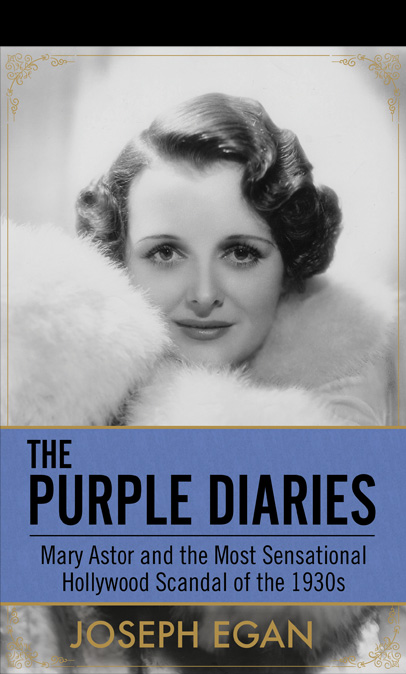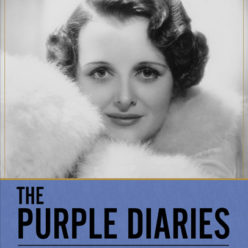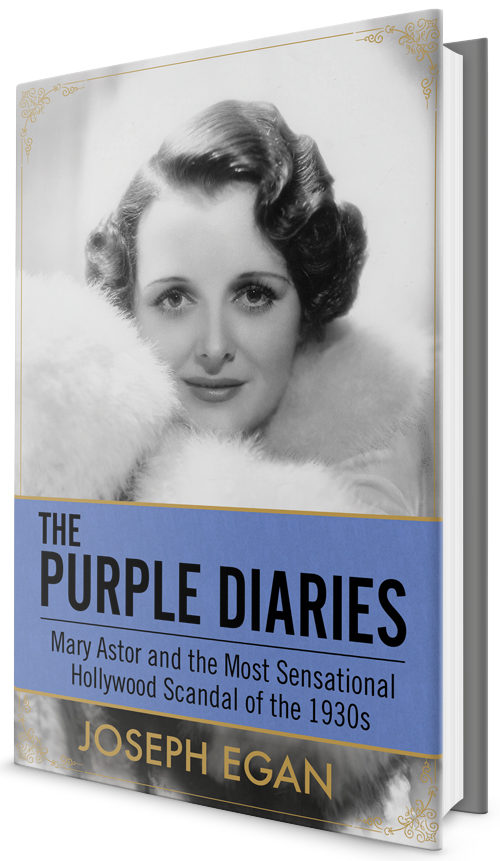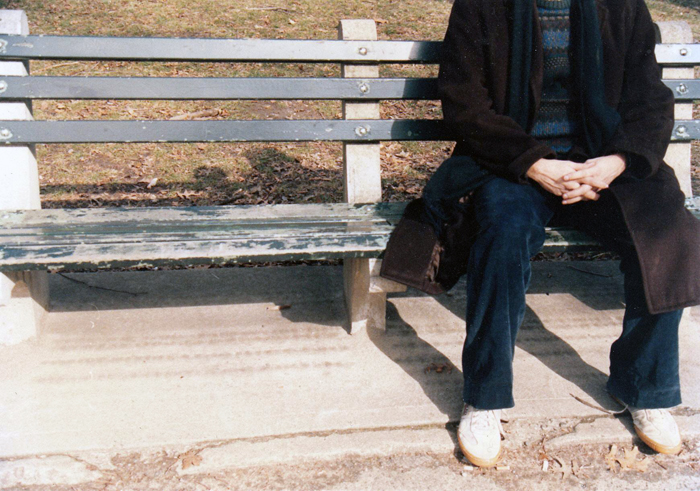

SCANDALOUS FILMS
A number of years ago I wrote a proposal for a book about films whose production and or release were engulfed in scandal. Included was a sample chapter as well as 10 thumbnail descriptions of some of the films I wanted to write about. I discarded the proposal long ago but kept the sample chapter and the thumbnails. I will post the sample chapter sometime in the future but below you will find the thumbnails. I hope you enjoy them.
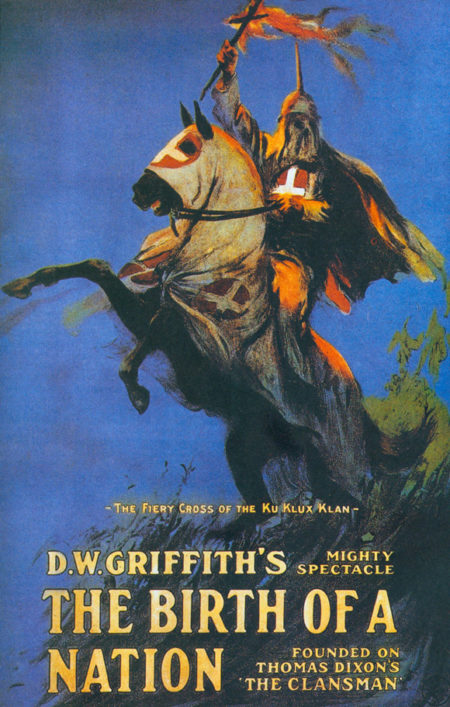
THE BIRTH OF A NATION (1915)
In 1915 President Woodrow Wilson saw a special showing of D.W. Griffith’s THE BIRTH OF A NATION at the White House. The former college President and Southern historian was moved to say “It is like writing history with Lightening.” Months later when the Civil/War reconstruction epic was shown in Philadelphia Black audiences were also moved, moved to riot. Their outrage at the film’s portrayal of Negroes became so vociferous that 100 policeman, Billy clubs raised and guns drawn, charged into a group of five hundred protesting Blacks. Even in staid Boston a group of prominent Blacks were arrested and thrown in jail after attempting to disrupt showings of the film.
Viewing THE BIRTH OF A NATION a century later the film’s racial stereotypes and portrayals of Blacks can still bristle the back of anyone’s neck. The affect it must have had on Black audiences in 1915 is unimaginable. What compounds the problem in any objective evaluation of BIRTH OF A NATION is the undisputed fact that the film remains the most influential piece of cinema ever made. It revolutionized not only the motion picture medium but also the motion picture Industry.
When the average film ran twenty minutes and admission was a nickel, THE BIRTH OF A NATION ran just under three hours and theatres showing it charged a two dollar top. At a time when a film’s musical accompaniment was a single Piano, audiences seeing THE BIRTH OF A NATION heard a full orchestra. Before BIRTH OF A NATION the movies were considered little more than a low brow diversion. BIRTH’s astounding use of film language transfixed audiences and carried them through such a powerful range of emotions that it forced them to look at movies in a new way. This one film ended a medium’s innocence and demonstrated to the world the power film could weld.
Nevertheless, as great as it is as cinema, THE BIRTH OF A NATION is steeped in racism and designed, either by intent or execution, to propagandize and politicize an audience to its viewpoint. This phenomenal power to convert received clear affirmation on a November night in 1915. The Ku Klux Klan had officially disbanded in 1869 but now, as part of the celebrations for BIRTH’s Atlanta premier, 25,000 former Klan members marched through the heart of the city down Peachtree street. This demonstration of unity of sentiment, precipitated and encouraged by the thematic content of THE BIRTH OF A NATION, eventually brought about the modern revival of the Ku Klux Klan. A better. although infamous, demonstration of the new medium would be hard to find.
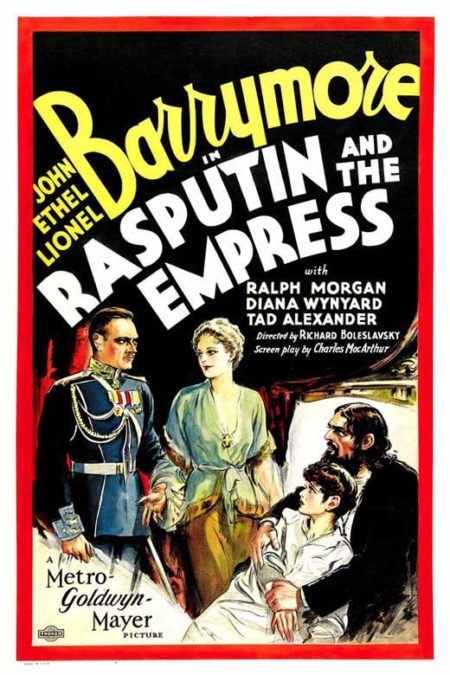
RASPUTIN AND THE EMPRESS (1932)
In 1932 MGM had achieved a coup. The three Barrymores were signed to star together for the first time in an epic film about the Russian Revolution. Ethel was to play the Czarina Alexandra, Lionel the mad monk Rasputin and John a Prince Chegodieff, fictional murderer of Rasputin. The film was called RASPUTIN AND THE EMPRESS.
The story altered history considerably but no more or less than many other historical films of the period. Bernie Hyman, the film’s producer, wanted what he called “Shock Progression” and had a scene written in which Rasputin rapes one of the ladies of the Russian court – a fictional Princess Natasha. The Princess, played by Diana Wynyard, is engaged to the John Barrymore character and her rape serves to motivate Chegodieff to kill Rasputin. It may not have been history but it made for good melodrama.
When RASPUTIN AND THE EMPRESS was finished shooting Bernie Hyman was so proud of the results that he personally wrote the film’s preface: “This concerns the destruction of an empire, brought about by the mad ambition of one man. A few of the characters are still alive. The rest met death by violence.”
The Film premiered during Christmas 1932 as a major roadshow and, as entertainment, met with both critical and box office approval. Its portrayal of history however did not fair so well. The general opinion was summed up by the reviewer for The Herald Tribune: “The film achieves one feat which is not inconsiderable, it manages to libel even the despised Rasputin.”
It went on to a successful domestic run and during the summer of 1933 was shown abroad. That’s when the trouble began. A New York Lawyer named Fanny Holtzman informed the studio that her clients Prince Felix and Princess Irina Yousepoff were planning to sue the studio for the pain and humiliation that the film had caused them. It seems that Prince Felix, Rasputin’s actual murderer – portrayed in the film by John Barrymore as Prince Chegodieff – was now married to Princess Irina. Holtzman argued that the Princess Natasha character, engaged to Chegodieff in the film and raped by Rasputin, was by implication Felix’s wife, Princess Irina. Since this rape had never occurred its portrayal in the film had defamed her character and therefore, Holtzman told MGM, was libel.
MGM was accustomed to threats of libel and made it a policy to fight them in court. When they wouldn’t settle Ms. Holtzman had no choice but to sue. She filed papers in New York and also filed in London where the Prince and Princess were living. A total of $4,000,000 in damages were claimed in both suits. The decision to file in London was the key to Holtzman’s strategy. The Princess was a cousin of King George V and the English were fervent supporters of not only their monarch but of all royalty in general. In fact it was at King George’s request that Holtzman took on the case. The two impoverished Russian nobles were living on a small estate provided them by the crown.
The trial was a London sensation all during the winter of 1934. The proceedings reached a fever pitch when Prince Felix took the stand. To a SRO audience he described every gruesome detail of Rasputin’s murder. Since the film’s enactment concurred with Prince Felix’s account the London barrister retained by Holtzman was able to prove that the Barrymore and Wynyard characters could not have been anyone other than Prince Felix and the Princess Irina. Producer Hyman’s preface “a few of the characters are still alive” was the nail in the coffin and MGM lost the case.
The Jury awarded the Yousepoff’s $125,000 in damages. Since Holtzman had also filed suits against every theatre in Britain which had shown the film this trial’s precedent could lose MGM all these other cases and cost the studio millions. MGM appealed but when the decision was upheld the company wisely settled.
MGM claimed the settlement had been for $750,000 but Holtzman, who never gave the exact figure, revealed years later that the final amount was a lot more then MGM had ever admitted to. An inspection of MGM’s books and a special contingency fund has led some writers to deduce the amount might have been closer to a million and a half.
In any case, as a result of this legal tug of war the shadow of RASPUTIN AND THE EMPRESS is still with us today. It is the reason you’ll find someplace in the credits of each and every movie released after 1933 the following disclaimer, “The events and characters in this film are fictional and any resemblance to characters living and dead is purely coincidental.”
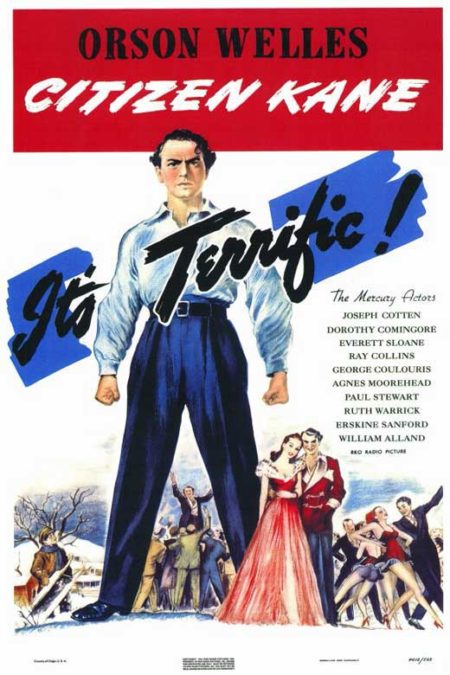
CITIZEN KANE (1941)
“I love Orson Welles even as he irritates me,” Director Henry Hathaway wrote in 1976 of his friend of 40 years. “He’s a very complex and brilliant man with more wasted talent than anyone else in the business. He uses and manipulates everybody he possibly can.”
Welles’ intention was to make CITIZEN KANE the center of a public furor. He lit public interest by the subject he chose to film. He fanned it by shooting the production in well publicized secrecy and nurtured it through the early press screenings. Finally, in a brilliantly orchestrated series of press conferences he went public and protested the attempts being made to suppress CITIZEN KANE. The result, he catapulted himself and his film into one of the hottest news stories of 1941.
Welles had tasted the excitement of a media tornado during the Martian scare in 1938. In one night his WAR OF THE WORLDS radio broadcast had propelled him into the national spotlight. The next morning an overflow of press and cameras mobbed Welles for a news conference he turned into a masterpiece of manipulation. Under the glare of newsreel lights Welles transformed himself from guilty perpetrator of the greatest hoax of modern times into a bewildered and humbly apologetic victim of his own gifts and talents. Talk of sending him to jail faded and Welles became a national hero.
This avalanche of publicity resulted in an RKO contract giving him complete control of any film he chose to make. He announced he was going to make the greatest film ever made and what is more – which he didn’t announce – he was going to expose William Randolph Hearst, the most powerful press baron in the world, to a public examination. For over 50 years Hearst had used his newspapers to expose others now Welles was going to use the movies to expose Hearst’s private life. It was daring, audacious and brilliant.
All during the CITIZEN KANE uproar Welles continually denied that he had set out to make a film about Hearst. Nevertheless years later he finally admitted the unflattering portrait of Susan Alexander, the Marian Davies like character, was created to enrage Hearst. Hardened by years of public vilification Hearst had long ago developed the armor to shrug off Welles’s attack but was sensitive and protective where his mistress was concerned. It was a sore point Welles dug at.
Many feared Hearst. His chain of newspapers and magazines gave him the power to orchestrate public opinion. If CITIZEN KANE could burr this old lion to rise up and attack CITIZEN KANE Welles would again be thrown into the national spotlight. This notoriety and attention would ensure his film the massive publicity it needed for a shot at success.
The scheme worked but unfortunately Welles had not anticipated the reception the film would receive in the second run and neighborhood film houses where loss often turns to profit. His brilliant and innovative film, which had been a success with sophisticated urban audiences, bewildered the small town and neighborhood crowd. They had come to see a story and couldn’t find one. Even after winning The New York Film Critics Best Picture Award and an Oscar for best screenplay CITIZEN KANE quietly disappeared. Eventually the film would find a vast audience on television. Broadcast in the mid-1950s the nearly forgotten masterpiece was rediscovered and hailed as the greatest film ever made. This reappraisal didn’t do Welles much good, though. By 1955, except for one more failure, his Hollywood career as a director was over.
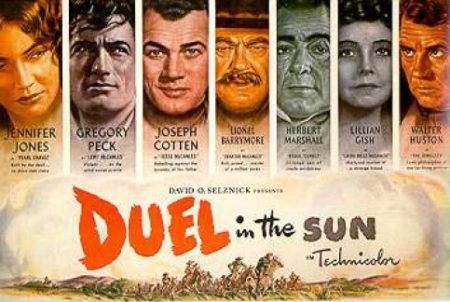
DUEL IN THE SUN (1947)
Blindfolded and with both hands tied behind his back independent producer David Selznick was probably a better picture maker than 99% of the producers in Hollywood during the 30s and 40s. Blindfolded, hands tied behind his back and down for the count is the best way to describe David Selznick while he was making DUEL IN THE SUN.
Selznick’s personal and professional problems had reached a head. His compulsive gambling was costing him over a million dollars a year. His bizarre work habits and fits of temper had lost him the best independent production team in the business. Ten years of using Benzedrine to stay awake for days at a time had robbed his body of its natural rhythms. He now needed drugs to go to sleep and drugs to wake him up. Finally the one stabilizing force in his life, his wife Irene Selznick, had enough of his irrational lifestyle and left him.
When he started shooting DUEL IN THE SUN David Selznick was physically and mentally out of control. His disorganized work habits and increasingly disoriented thinking robbed him of the ability to see this production in any objective light. Not trusting anyone to write his film he wrote it himself and once into production he was rewriting it on an almost hourly basis – finishing some scenes moments before they were filmed. This obsessive perfectionist found himself lost in pursuit of a vision only he seemed able to see. As he shot and reshot and added and then reshot, what had started out as a small, intimate, sexy western escalated beyond all reason and logic into – at five and a quarter million dollars – the most expensive film made up to that time.
At 5 PM as director King Vidor would be finishing a scene Selznick had rewritten that morning, Selznick would come racing onto the set demanding the entire crew go on overtime so newly written rewrites of his earlier rewrites could now be re-filmed. After months of this Vidor finally quit. Selznick hired other directors and they reshot much of what Vidor had shot and then eventually reshot much of what they themselves had shot. The film was in and out of production for almost two years and by some estimates had been made over from beginning to end at least five times.
When it finally came time to release DUEL Selznick planned to experiment with an innovative form of film advertising. It was called mass marketing and added another two million dollars to DUEL’s soaring budget. This onslaught of publicity began a full year prior to the film’s release and when it peaked every man, woman and child in the United States were aware of the film and a full 85% of the population were “desperate” to see it.
Advertising and production costs had put Selznick’s investment in this single film at close to seven and a half million dollars. Since Selznick financed with bank loans his interest payments for DUEL were staggering. So staggering they were forcing the producer to devise a way of releasing his film so he could quickly recoup his investment.
The standard release patterns would have had Selznick book DUEL into a single theatre in major cities and over a year or so eventually branch out to more and more theatres. Using this release method DUEL would have taken a year or more to return its money. Desperate to get the banks off his back Selznick planned to book DUEL into hundreds of theatres all over the country. Standard today in 1947 this was a revolutionary idea. United Artists balked and refusing to go along with Selznick’s scheme cancelled his contract.
Selznick now had a seven million dollar picture and no way to release it. Never one to be out done in a crisis, he formed The Selznick Releasing Organization and made plans to distribute DUEL himself. His first move was to platform DUEL at two L.A. theatres in December 1946 to qualify for the Academy Awards. The engagement attracted record breaking crowds and financial salvation seemed at hand.
Then, just as things were looking up he got hit with a blow. The Catholic Church and the Legion of Decency found the film’s sexual content offensive and planned to have millions of Catholics boycott all showings DUEL. The press dubbed it “Lust in The Dust” and a scandal was in the making. If Selznick didn’t get the Legion to abort their plan to condemn the film he would not be able to book his movie into the hundreds of theatres where DUEL needed to play. As the May release date approached Selznick, his film and his Studio were in a life and death struggle.
Taking the offensive the producer issued scores of press releases assuring the public that there was nothing wrong with DUEL. While he maintained this public posture he privately made the cuts requested by The Legion Of Decency. When the film received The Legion’s acceptable B rating a second round of press releases informed the public that these cuts were minimal and in fact had improved the film. The negative was recut and under enormous pressure to get them out in time, Technicolor began processing the hundreds of prints Selznick needed.
On May 7 1947 DUEL IN THE SUN opened across the country and did business comparable to GONE WITH THE WIND. As amazing as it may seem, this production – which read like a disaster of mistakes and miscalculations upon miscalculations from beginning almost up to the date of release – became the most successful film of the year and for almost six years held a place behind GONE WITH THE WIND as Hollywood’s second highest grossing film.
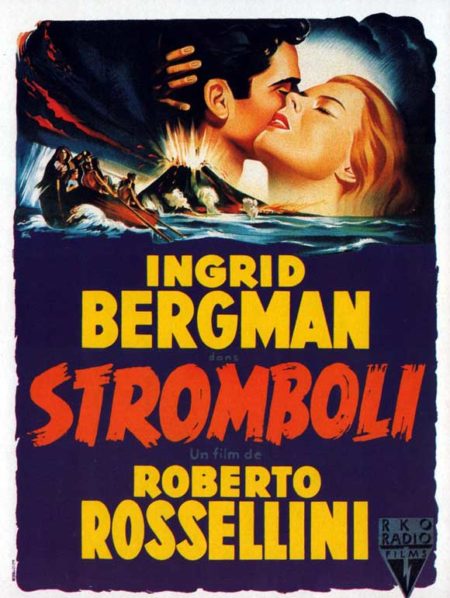
STROMBOLI (1951)
On March 14, 1950 Senator Edwin C. Johnson of Colorado rose from his seat in the Senate Chamber and walking down several steps took his place at the podium. Speaking to his colleagues and to the entire nation he called actress Ingrid Bergman the most powerful influence for evil in the world. He labeled her a common mistress, a free love cultist, a Hollywood apostle of degradation and asked the Senate to deny her from re-entry to the United States for moral turpitude.
Two months before, Bergman – still officially married to her husband Peter Lindstrom – had outraged the world by giving birth to a baby fathered by Italian film director Roberto Rossellini. Her affair with Rossellini, her pregnancy and the birth of their “love child” immersed Bergman in the century’s most publicized scandal.
During the latter part of the 1940s Ingrid Bergman was the greatest female star in the world. A string of hits had pushed her to the top of her profession and endeared her to film goers around the world. In fact, Bergman’s portrayals of Nuns and Saints had made her a sort of “St Ingrid” to her fans. Her squeaky clean public image as mother to daughter Pia and wife to husband Peter was held up as an ideal to women all over America.
In private things were quite different. Bergman was a driven woman whose family come second to her work. She felt her ambition to become a great actress thwarted by the limited artistic aspirations of her Hollywood films and longed for the emotional heights she felt true acting could take her.
Then she saw OPEN CITY and PAISAN. They were Italian neo-realist films directed by Roberto Rossellini. What Bergman saw on the screen transfixed her. It was a revolutionary kind of realistic acting which conveyed raw, powerful and almost painfully honest emotions. Feeling her Hollywood work paled in comparison she knew she had to work with Rossellini if she was ever going to be fulfilled as an actress. So she wrote the director and offered her services.
Rossellini was overjoyed. The prospect of directing the most popular actress in the world was an irresistible proposition. He traveled to Hollywood and without a script, but with Bergman’s name on a contract, raised financing from RKO for a film titled STROMBOLI. A few months later the two were on Island off the coast of Italy making their film.
Even before they left Hollywood everyone suspected an affair. Now, on the island of Stromboli the two were living together openly.
Bergman found in Rossellini a fusion of the man and the artist. His emotions, his feelings, his passion were in every frame he shot. Working with Rossellini, experiencing through his artistry, she felt liberated both as an artist and as a woman. This outwardly sedate but inwardly volatile Swed found herself finally drinking from a well of unlimited creativity.
Rumors of her affair with the Italian Director were soon in the gossip columns but the real trouble began when she became pregnant. Hearing about it the American public had to stop to catch its breath. This new image of Bergman as a wanton was in such conflict with the image of Bergman as the saint that it surprised, shocked, disappointed and eventually outraged her fans. They turned on Bergman and without reservation condemned her.
As day after day stories about the star’s pregnancy filled the newspapers, Bergman and STROMBOLI became the most reported and talked about person and film of 1949-1950. While reporters and newscasters fueled the fire, school groups discussed banning her films and pastors from their pulpits likened her to the Devil. Bergman received almost 40,000 letters condemning her, Rossellini, and even the child she was carrying. It had become a nightmare.
Reporters and photographers followed her everywhere. They even tried to break into the hospital where the baby was born. She was labeled box office poison and when STROMBOLI opened at 400 theatres across the United States in February 1950, it became a box office disaster of epic proportions. In fact, at Broadway theatre there were more newsman reporting on the film’s opening then people buying tickets to see it.
When Bergman finally gained her freedom from Lindstrom and Rossellini divorced his wife the two were married and the scandal faded away. Nevertheless Bergman’s career in Hollywood was over. She made some more films with Rossellini in Europe but with each film losing more money than the last, director and actress were forced to work apart. She worked with Jean Renoir in France and Rossellini worked with other actresses in Italy. Their relationship cooled and in the late 1950s they were divorced.
Rossellini had said of Bergman that she was woman who didn’t know passion. Yet in order to love him, and for what he could give her as a woman and an actress, this “passionless” woman had given up her family, her career; had given up everything the world could give a woman. If one was to look in literature for a similar sacrifice similarly unappreciated ANNA KARENINA comes to mind. But unlike Karenina, Bergman did not throw herself in front of a train. She continued working and eventually a Hollywood studio offered her a part.
ANNASTASIA was a spectacular comeback. Her performance won her a second Oscar and she was back on top again. In a score of films which followed she did impressive work and at the time of her death was once again one of the world’s most admired women.
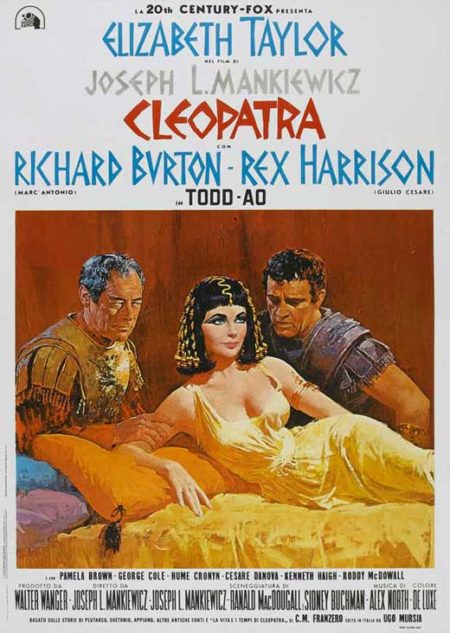
CLEOPATRA (1963)
On the set of CLEOPATRA history was repeating itself. During the production of what would eventually become the costliest film ever made, star Elizabeth Taylor left her husband Eddie Fisher and took up open residence with lover and co star Richard Burton. Their affair became a sensation and took its place alongside the Cuban Missile Crisis as the most talked about event of 1962.
Unlike Ingrid Bergman Elizabeth Taylor had never been anyone’s idea of a saint. In the recent past she had earned the public’s disdain for “taking” Eddie Fisher away from “apple pie sweet” Debbie Reynolds and then turned public opinion around again when she almost died of pneumonia during CLEOPATRA’S aborted London shoot. Her physical courage during the crisis and the drama of her recovery earned her the world’s admiration as well as an Oscar for her performance in the second rate BUTTERFIELD 8. It seemed she could do no wrong.
Obviously enjoying their notoriety Taylor and Burton made no attempt at discretion and photos of them cavorting in Roman nightclubs covered the front pages of newspapers all over the world. The scandal, similar to the one which had destroyed Ingrid Bergman’s career 10 years before, made Taylor the most famous woman in the world. Her clothes, hairstyles, everything about her was imitated by woman everywhere. This celebrity reached its height in 1964 when she and Burton were married. The three American television networks interrupted their regularly scheduled prime time programs to announce it as a major news story.
The first ads for CLEOPATRA first appeared in March 1963. They were a testimony to the power of the Taylor Burton notoriety. For the first ads of a $40,000,000 roadshow– upon whose fate rested the very existence of 20th Century Fox–neither the name of the film nor the name of its stars were anywhere on the ads. Four full months before its release the film and its stars were so well known it wasn’t necessary to mention them.
By June 12, the day of the film’s world premiere, CLEOPATRA had amassed 26 million dollars in blind bid guarantees from theatres around the world. Without being seen by a single paying patron it had become the most successful film of 1963.
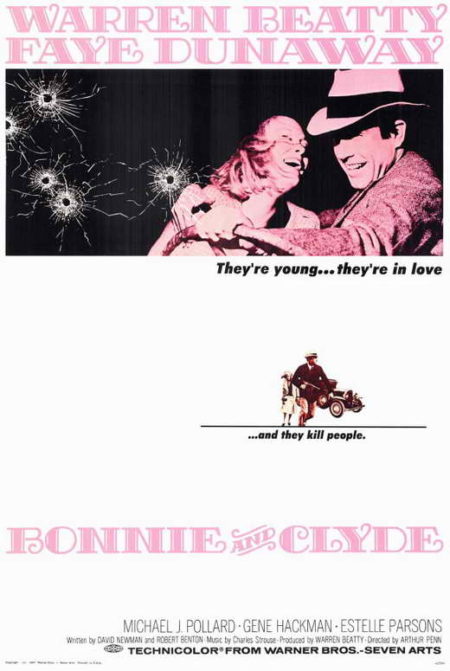
BONNIE AND CLYDE (1967)
Initially BONNIE AND CLYDE was written off by the Hollywood establishment and much of the critical community as a mindlessly violent exploitation film. Headed for oblivion the picture went through early playdates doing subpar business. Producer and star Warren Beatty knew BONNIE AND CLYDE was something special. It just needed to find its audience, so he decided to do some drum beating. Paying his own expenses he went on the road and promoted the film. He eventually persuaded Warner Brothers to rebook the movie and the second time around BONNIE AND CLYDE not only found its audience it became the second highest grosser of 1967.
The film connected with the growing movie conscious youth audience and became the cultural land post of its day. The film’s fashions created a 30’s revival and Bonnie Parker hats, hairstyles, dresses and even lipstick were imitated all over America. Liking and not liking the film soon became a means of dividing the hip from the square.
BONNIE AND CLYDE’s surprising popularity forced many critics who had originally written it off back into the movie theatres. These same critics now started to call it the land mark film of the 1960s. There was discussion about its innovative film technique and nonlinear form of storytelling. It was given the critical attention once only preserved for serious foreign films. For the first time in recent memory a successful mainstream American motion picture was called art. Because of its violence and pro criminal point of view, BONNIE AND CLYDE’s ambivalent moral position was hotly debated in magazines and film Journals. It was labeled the first NOW movie and predictions were made that BONNIE AND CLYDE and films like it would revolutionize the American Cinema.
The film’s success touched the careers of everyone associated with it. Warren Beatty, Faye Dunaway and Gene Hackman shot to the top of their profession and Estelle Parsons won an Academy Award. Even Director Arthur Penn come into the limelight. Judged an American “auteur” no less than three books were written about him. Strangest success was Michael J. Pollard. This baby faced “oddball” had been floating around in films for more than decade going nowhere. After BONNIE AND CLYDE he become a cultural icon and was offered every anti-establishment script in sight.
BONNIE AND CLYDE eventually showed itself to be the watershed film that everyone predicted. Its look, its attention to period detail and naturalized acting – with emphasis on character more than plot – were imitated in many films that followed and soon became standard in American filmmaking. But like so many innovative films whose style and technique were duplicated into cliché, BONNIE AND CLYDE has lost much of its original sparkle. The sex and violence which had so shocked audiences in 1967 now seems sedate. Nonetheless, it still remains a rip roaring entertainment in the best tradition of American gangster cinema.
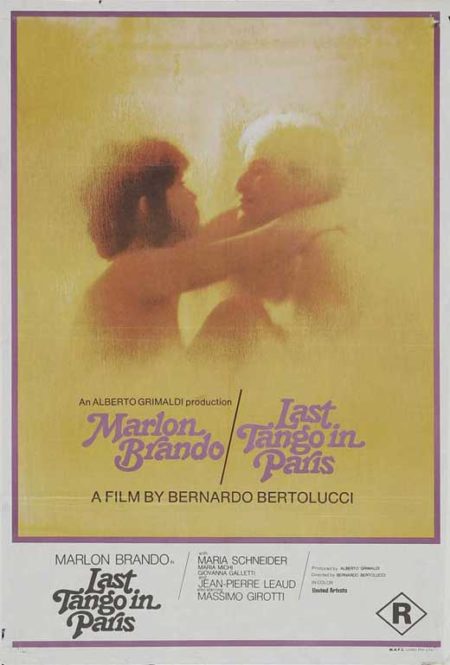
LAST TANGO IN PARIS
“Bernado Bertolucci’s LAST TANGO IN PARIS was presented for the first time on the closing night of the New York Film Festival on October 14 “, Pauline Kael wrote in 1972:”That date should become a landmark in movie history…The movie breakthrough has finally come. Exploitation films have been supplying mechanized sex – sex as physical stimulant but without passion or emotional violence….This must be the most powerfully erotic movie ever made and it may turn out to be the most liberating move ever made.”
Pauline Kael’s review sounded the battle cry for what would become the most discussed, praised and vilified film of the 1970s. By the time LAST TANGO officially opened in the United states the following January it had been confiscated in Italy for taking “persistent delight in arousing base, libidinous instincts” and causing a scandal in Paris where it was breaking box office records in every theatre in which it was being shown.
After the film opened in the United States, week after week the opening monologues of the Johnny Carson, Dick Cavett, and Merv Griffin shows were filled with references to the film. On the Cavett show comedian David Steinberg talked for over 20 minutes about his reaction to seeing the film. Harry Reasoner denounced it as pornography masquerading as art and PLAYBOY MAGAZINE ran stills from the film of stars Marlon Brando and Maria Schneider romping in the nude. Both TIME and NEWSWEEK devoted covers to LAST TANGO and stories about the film appeared in almost every newspaper and magazine in the country.
Wherever the film opened audiences flocked to see it. United Artists, the film’s American distributor, played the film as a roadshow with reserved performances and ticket prices hiked up 40%. People who had never seen a foreign film were paying five dollars a head (when the top price for a first run movie was three dollars) for the privilege of seeing LAST TANGO and within a year of its opening the picture had become the highest grossing foreign film ever to play in the United States. It eventually achieved a domestic producer gross of over $16,000,000 and this X-rated movie become the eighth highest grossing film of the year.
To call it a sensation is an understatement. The LAST TANGO IN PARIS was an event unparalleled in motion picture history. It was not a political epic as BIRTH OF A NATION had been. It had not caused any of the production problems or on set scandal as had happened during the making of CLEOPATRA. With LAST TANGO it was the film itself and its no holds barred presentation of a sexual relationship which had captured the interest, the notoriety and the imagination of the world.
The direction mainstream pictures had been moving towards since the demise of industry self-censorship six years before crystalized for many with one viewing of LAST TANGO IN PARIS. The film changed the public’s notion of how and what a motion picture could portray. Sex as an extension and expression of a character’s inner self, which had formally been the exclusive domain of the novelist, now became terrain for the filmmaker.
Marlon Brando’s performance and persona brought this new spectrum of film language home with riveting clarity. Pauline Kael wrote of Brando in the film that, “His first sex act has a boldness that had the audience gasping, and the gasp was caused – in part – by our awareness that this was Marlon Brando doing it, not an unknown actor. We are watching Brando throughout the movie, with all the feedback that implies and his willingness to run the full course gives the film credence.”
The controversy the LAST TANGO IN PARIS precipitated did not let up for months. Critics and public alike were split on the film’s importance and merit. The film became a lightning rod for anyone who had anything to say about sex or the movies or the shape of the world in general.
The TIME Magazine cover story brought forth a diversity of opinion in letters to the editor which perhaps best typifies the emotional response the film’s controversy touched in the American public.
“Your cover story on LAST TANGO terrified me. A society that spends so much time thinking about filming and writing about sex obviously does not have much else it considers important enough to occupy it. We are now nearly ready for the takeover.”
“Those of us who are awaiting the reformation must be grateful to Marlon Brando and Director Bertolucci. Only after respectable folk embrace the excess of an era can a return to decency begin.”
“What image of life is this to present to our children.”
“I was shocked, titillated, disgusted fascinated, delighted and angered by reading your story on Last Tango In Paris. I can’t wait to see the movie.”
“Your taste and self-esteem as a publication are apparently as debased as are Mr. Bertolucci and Mr. Brando’s.”
“Where will our younger generation find some older people to admire? Standing in line to watch LAST TANGO?”
“Thanks to your well written article my mind is at least a bit more open to TANGO and all its elements.”
“It is interesting to note that the so-called intellectuals of this world usually find artistic merit and true brilliance where the dumb masses only recognize trash.”
“Minutes after my TIME came, I threw it in the refuse can, whereupon the rest of the garbage got out and walked away.”
“Where have all the flowers gone? They have wilted into a stinking pile of compost nurtured by irresponsibility, disrespect, laziness, greed and moral decay, exemplified by TIME’S feature story on LAST TANGO.”
“I am listening to a local radio station and am astonished by a barrage of phone calls to the station condemning your cover story on LAST TANGO IN PARIS. While I realize that tastes vary, I am continually appalled by America’s attitudes toward sex and violence. A harmless newsmagazine article like yours is regarded as filthy, sinful and unfit for viewing by ‘decent’ women and children. And yet children are packed off to Saturday matinees featuring war and/or gore films. When did violence cease to shock and sex lose its beauty? I really don’t understand. Something is terribly wrong.
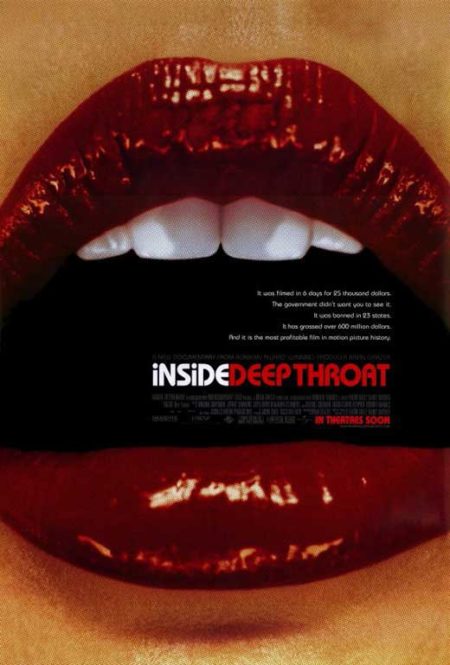
DEEP THROAT (1973)
In 1973 Linda Lovelace was transformed from an obscure performer in porn films into a household word. Throughout America her name became synonymous with the word sex and Lovelace emerged from the dark gray world of sex performer, once thought inhabited only by prostitutes and drug addicts, to become one of America’s prime advocators for the new sexual freedom. What earned Lovelace this celebrity and more importantly, media respectability, unheard for a porn performer before, was an eight day appearance in front of a camera for an Adult film called DEEP THROAT.
Shot on a budget of just over $25,000 with a crew of eight, DEEP THROAT grossed over 10 million and changed the face of pornographic films in America. Its combination of broad, almost Marx Brothers like humor and graphic sex brought people into porno theatres who had never seen a “dirty” film before. It became the film to see in 1973 and because its white collar audiences were composed of as many women as men, it blasted hardcore pornography forever out of the closet and made it for the first time acceptable to mainstream America.
Before DEEP THROAT’s breakthrough, pornography and men in dirty raincoats were considered by the public as one and the same. Normal, “healthy” sex stood on one end of the scale while sex which utilized “smut” for enjoyment stood on the other side.
DEEP THROAT’S success and the millions and millions of dollars Americans paid to see it made it obvious to one and all that it was not just men in dirty raincoats who were enjoying these sorts of films. It forced many Americans to accept not only the popularity but also the inevitability of pornography as part of the American way of life.
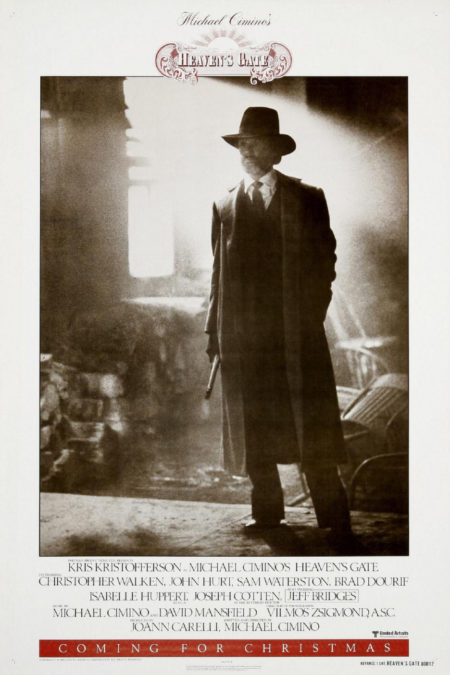
HEAVEN’S GATE (1980)
The reviews of the DEER HUNTER lauded its director Michael Cimino for making a new kind of movie. NEWSWEEK said he was now at the center of American film culture and TIME magazine called THE DEER HUNTER as powerful and important a film as THE GODFATHER and LAST TANGO IN PARIS. Other reviews said much the same and THE DEER HUNTER, despite growing opposition to it’s supposed anti Vietnamese slant, won the Academy Award as best picture of 1978.
In his Next film Cimino decided to prove that the praise he received was not misplaced. He was going to make HEAVEN’s GATE into a masterpiece. The success of THE DEER HUNTER had given him unparalleled clout at United Artists, the new film’s backers, and Cimino found he was able, for the first time in his career, to make a film exactly the way he wanted to make it. He quickly enlarged the scope of his movie and spending what he wanted, shot and shot and shot and shot. What had gone into development as a 7 million dollar movie and into production as a 12 million dollar film would turn into a 60 million dollar epic if Cimino was allowed to finish the film at the pace he was shooting.
Unfortunately United Artists found itself in a power vacuum. A few months before i’s president and executive officers had quit to form Orion Pictures. The men now in charge, especially in the production division were relative novices, and didn’t realizing until the film had reached an estimated 30 million dollar budget what Cimino was doing out in Montana. Cimino was finally called to account, the purse strings taken out of his hands and production speeded up. After another 5 million was spent on an elaborate but very efficiently shot prologue, 20 months after the start of production a 35 million dollar HEAVEN’S GATE premiered in New York City in November 1980.
Expectation was high and so critical disappointment was great. Vincent Canby called it an unqualified disaster and most of the other reviewers felt the same. Cimino was devastated. In shock and dismay, he asked UA to close the movie and reopen it again after he had time to do some re-editing. In shock and dismay UA, not knowing any better, agreed and HEAVEN’S GATE was pulled from release before it opened. It was the single biggest blunder UA had made in a long list of HEAVEN’S GATE blunders. Without realizing it they had forever tainted the film.
This unprecedented move set off an avalanche in the press of speculation and hype and created a media event that out stripped in sheer quantity anything written about a film in the 1980s, the 1970s and maybe even the 1960s. The film was soon labeled the greatest flop of all time and was written about every day for the next 7 months. When nothing more could be said about HEAVEN”S GATE itself, HEAVEN”S GATE was written about as the focal point, and the clear evidence, of everything wrong with the film industry. Outcries against Michael Cimino stopped short of a public lynching but he was written about as the kind of egotist who would destroy Hollywood if he was given half a chance.
When the film re-opened in April 1981, shorn of over an hour of running time, it died at the box office and found a similar reception in the few other countries where it was also released. HEAVEN’s GATE the film quickly disappeared but Heaven’s Gate the new name for grandiose Hollywood flop had become part of the culture. This film or that film was a new Heaven’s Gate. Heaven’s Gate this and Heaven’s Gate that was heard over and over. After a while people were using the term Heaven’s Gate who didn’t even know what HEAVEN’S GATE had been.
Michael Cimino did some more editing and the film was released in a full length version on Video. It differed in many ways from the version released in 1980 and many of the problems which had confused and angered the critics back then were corrected. The film was reevaluated, given qualified praise and subsequently this longer version was released in England, France and Germany to good reviews but poor box office.
Asked later if he hadn’t been too harsh in his first review of HEAVEN’S GATE, Vincent Canby said that he had thought the film had merit but was too obscure for the wide audience to whom it was being aimed. After all he told the reporter, this was not a small French film for a limited audience. It was a large scale epic designed for a mass audience. He felt as such that it had disappointed. In short Vincent Canby had not reviewed the film, he had reviewed the budget.
The following are from YouTube. You can click to scan through,
https://www.youtube.com/watch?v=MQe5ShxM2DI
https://www.youtube.com/watch?v=p1dfR1gaaS8
https://www.youtube.com/watch?v=PPR5U9wkN9I&oref=https%3A%2F%2Fwww.youtube.com%2Fwatch%3Fv%3DPPR5U9wkN9I&has_verified=1
